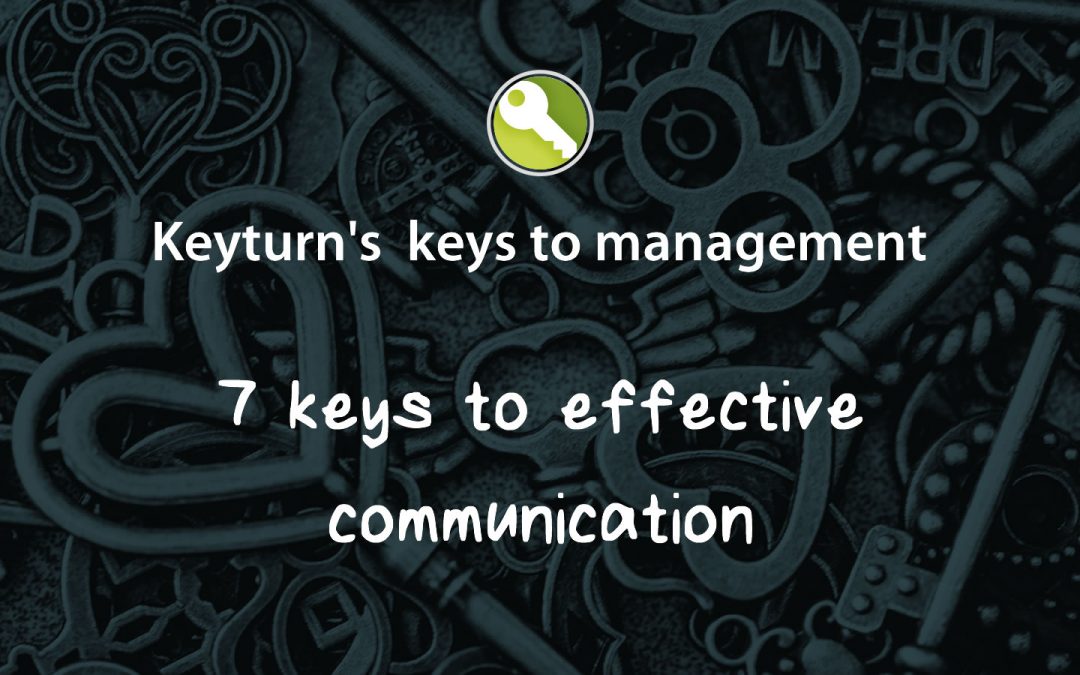Do you want to develop confidence and the ability to make presentations to key influencers like senior managers and customers etc? There is so much to think about when making a presentation, including location, content, audience, tech, handouts, voice, body language, and the list goes on. It can be overwhelming, but we want to give you some key starting points on making your presentation for effective communication. .
Most presentations will be more effective it the presenter is able to apply the following ‘stages’ to their presentation:
Keyturn’s seven keys for effective communication
- KNOW your objective(s)
Before you begin, remind yourself what you want to achieve through your presentation. This will help you to ensure that what you say, especially in answer to questions, is relevant to you achieving your objective. You may find it helpful to share your objective with your audience, either verbally, or by being on the screen as a ‘welcome slide’ before you officially commence.
- Gain attention
Ensure your listeners are listening before you start to present. This may be through a slide which gains their attention, through something you say, or even simply by an obvious action such as standing up and proceeding to where you will be speaking from. Make sure that everyone is looking at you and are quiet before you start.
- Build rapport
Help your audience to identify with what you are saying through common experience, involvement, empathy with the situation, humour etc. However, avoid sarcasm, or humour which could be deemed offensive, especially if you do not know your audience.

- Present your key points (facts) powerfully
Make them brief, relevant, and clear. Where possible use visual aids, samples, demonstrations etc. to heighten peoples’ retention. It may be appropriate to allow the audience to try something for themselves or to have brief discussions amongst themselves if this would be helpful to them.
- Use benefits and ‘proofs’
Tell your listeners exactly how they themselves will benefit from what is being presented (the ‘what’s in it for me” principle). Even when presenting something seemingly dry like a policy update, try and show how the change will benefit those affected, rather than just presenting the facts.
Your message becomes even more influential if you can also ‘prove’ that what you are saying is likely to happen, e.g. by providing examples of similar situations, presenting data, demonstrating how something works etc.
- Check understanding regularly
Ensure your audience have heard what you wanted them to hear. Ask questions and look for positive body language signals as they answer. It can be a helpful to offer the opportunity for questions both during the presentation and at the very end.
- Gain commitment
Seek positive indications that your ‘audience’ will act on what you have communicated. Ending your presentation with a definite action is far better than just letting it fade out. Consider actions such as asking a rhetorical question (and observing body language reactions), asking people to do something (e.g. leave their contact details so that you can send something to them) or ask people to contact you by a specific date in response to something you asked for.
See our training programmes on effective communication and other important topics: Management and leadership training

